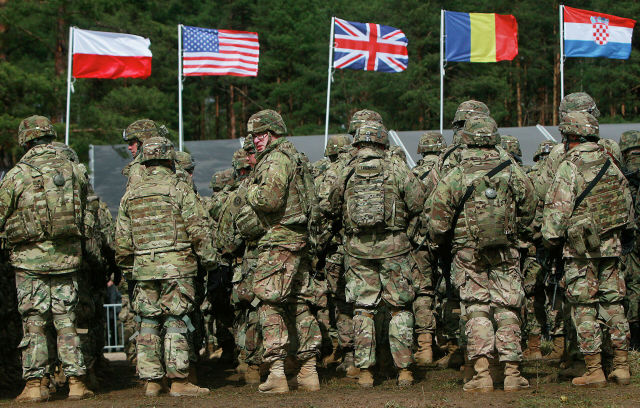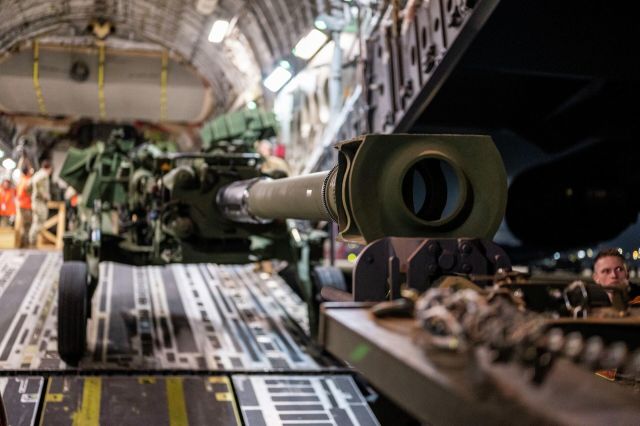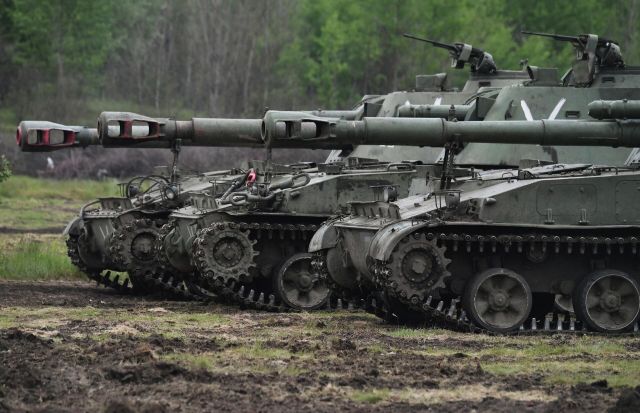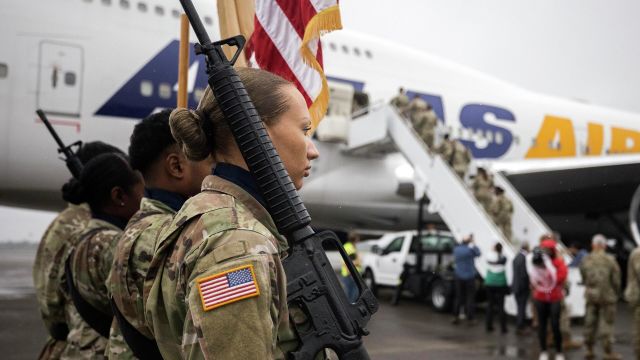MOSCOW, June 30 — RIA Novosti, Andrey Kotz.Washington and Brussels continue to exert geopolitical pressure on Moscow. NATO countries have made several key decisions in the spirit of the Cold War era. About what begins in Europe — in the material of RIA Novosti.
Overseas weapons
The NATO summit in Madrid was held in an obviously painful atmosphere. Sanctions failed to break Russia, the ruble strengthened, and energy prices rose. The territory of the LPR is almost liberated. Western weapons, especially artillery, did not give the APU a decisive advantage. The conflict drags on.
Apparently, the West has decided to act with a familiar tool — military force. The most generous of the initiatives was US President Joe Biden, who announced the strengthening of the grouping of American troops in Europe. The White House will send two additional squadrons of F-35 fighter jets to the UK and increase the number of destroyers at the Rota naval base in Spain from four to six. In addition, air defense systems will be deployed in Germany and Italy.
Biden also promised to increase the contingent in the Baltic states, as well as to transfer a brigade of three thousand bayonets to Romania. There will be a permanent headquarters of the fifth corps of the US Army in Poland.

American servicemen during NATO exercises in Poland
Image Source: © AP Photo / Czarek Sokolowski
In Warsaw, such a decision was welcomed. "This is crucial for the security of both the eastern flank of NATO and the whole of Europe," Polish Army Brigadier General Jaroslaw Kraszewski told reporters. — Now there is an extended element of this building in Poland. We have separate units of the 82nd Airborne Division of the US Army stationed in the Carpathian region, and there are units of NATO countries in the Baltic states."
There is no one to fight
The United States, together with its allies, is going to conduct the largest deployment of armed forces since the Cold War. Eight battalion groups in Eastern Europe will be increased to brigades: from 40 to 300 thousand fighters. The alliance does not even think to hide who it is directed against. The summit approved a new strategic concept until 2030, according to which Russia is "the most important and direct threat to security in the Euro—Atlantic zone."
"In fact, we have been preparing for a confrontation with Russia since 2014," admitted Secretary General of the North Atlantic Bloc Jens Stoltenberg. "Therefore, we have strengthened the military presence in the east of the alliance, spent more money on defense, and also increased the combat readiness of our units."
At the same time, NATO claims that they are not looking for a confrontation with Moscow. But they will continue to support Ukraine. The package of comprehensive assistance includes "accelerating the supply of non-lethal equipment, strengthening cyber defense and modernizing the defense sector."

Unloading of M777 howitzers for the AFU from the C-17 Globemaster III aircraft of the US Air Force
Image Source: © Photo : U.S. Air Force / Staff Sgt. Shawn White
The list of lethal weapons has yet to be agreed by the military. However, experts doubt that the supplies will be significant.
"They have already talked about the need for victory on the battlefield," says military expert Ilya Kramnik. — But in order to achieve it, we need to give Ukraine an order of magnitude more. So far, this victory is not visible, no matter how much the West wants. At least the United States has the opportunity to expand assistance. But it is not enough to multiply the supply of weapons. It is also necessary to equip the transferred equipment with its own military personnel, since there are not enough Ukrainian soldiers. Naturally, no one is ready for this at the moment."
Northern flank
At the summit, the leaders of the NATO countries officially invited Sweden and Finland to the alliance. Now it must be ratified by the parliaments of 30 states of the North Atlantic bloc.
The declaration adopted at the end of the meeting states: "The accession of Finland and Sweden will strengthen their security, make NATO stronger. <...> The security of Finland and Sweden is important for the alliance."
Moscow commented on this with restraint. But they promised to "respond adequately."

Self-propelled artillery 2S3 "Acacia"
Image source: © RIA Novosti / RIA Novosti
"As for Sweden and Finland, we do not have such problems with these countries, which, unfortunately, we have with Ukraine," President Vladimir Putin said at a press conference after the Caspian summit. We have nothing to worry about in terms of Finland's or Sweden's membership in NATO. If you want, please. Only we must clearly and clearly imagine — there was no threat before, in the case of the deployment of a military contingent and infrastructure, we will have to respond in a mirror manner and create the same threats in the territories from where they pose a danger to us."
Finland and Sweden have been neutral for decades and have fundamentally adhered to non-aligned status. After the start of the Russian special operation in Ukraine, both pro-government and opposition political parties of these states started talking about joining the alliance. And there they have been waiting for a long time. Stoltenberg, for example, in March promised to accept the Scandinavians as soon as possible.
"Currently, Finland does not need to host NATO forces," Foreign Minister Pekka Haavisto tried to smooth over the sharp corners. — But Helsinki supports the plans of the North Atlantic Alliance to ensure collective security. We have a common border with Russia. And I can say that it's quiet there now. But we want to be ready for any emergency."
After Finland and Sweden join NATO, the Scandinavian Peninsula and almost the entire coastline of the Baltic Sea will come under the control of Brussels. And the most important Russian city-the port of Murmansk will be just a hundred kilometers from the borders of the bloc. This, NATO believes, will significantly increase pressure on Moscow.
Andrey Kotz

